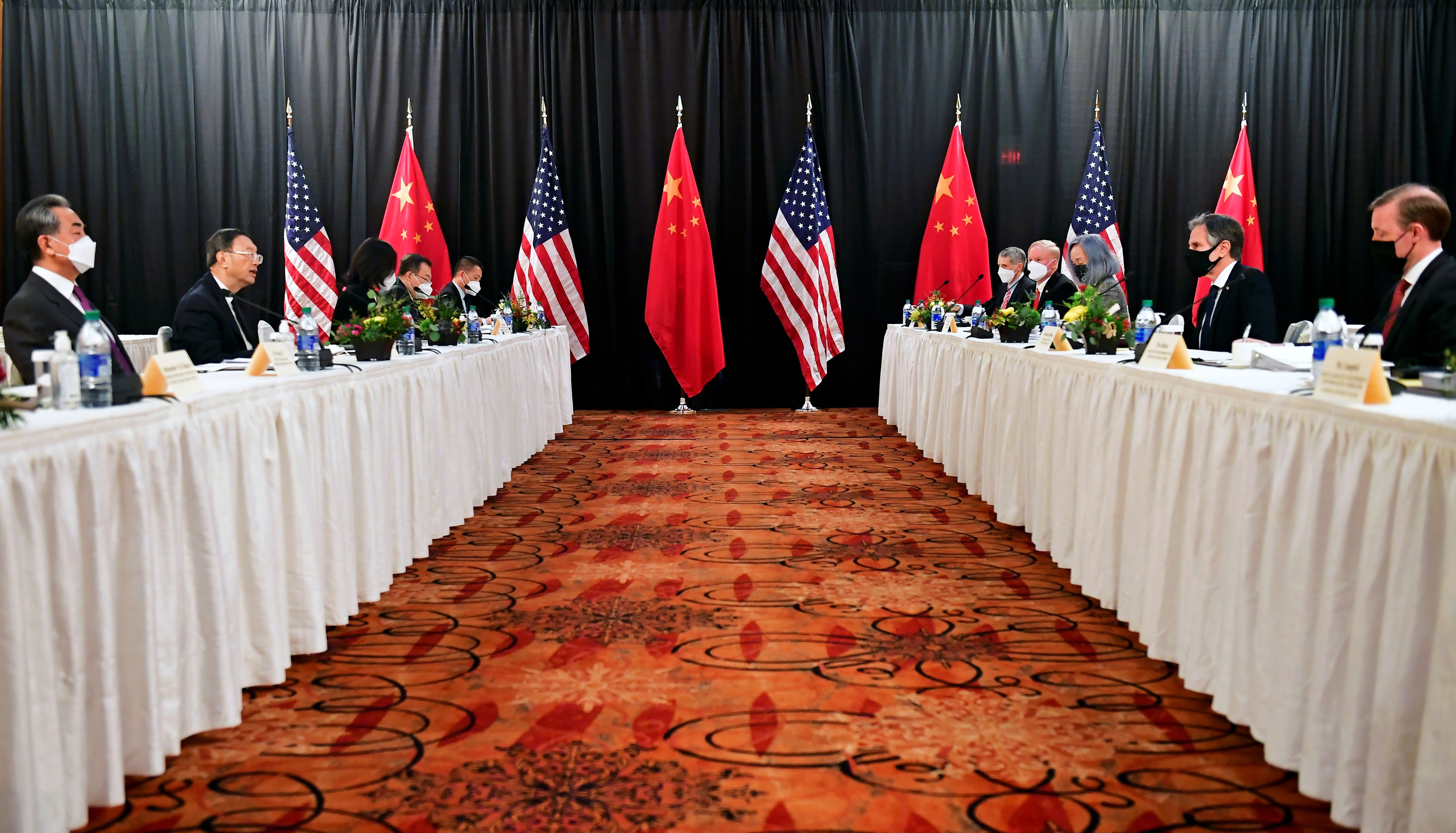U.S-China Meeting—Monologues Instead of a Dialogue

Under what circumstances was the meeting held?
During the session of Chinese parliament that ended on 11 March, both Foreign Minister Wang Yi and Prime Minister Li Keqiang emphasised their readiness to cooperate with the Biden administration. However, they said the U.S. should stop its “lies”, a reference to, for example, the situation of the Uighurs in Xinjiang. The talks with the U.S. in Alaska were presented by China as proof of the resumption of the “strategic dialogue” and a change in American policy that could ultimately mean a departure from the sanctions policy. For the U.S., the meeting was an element of increasing pressure on China. They were organised after events with a clearly anti-China character: the Quad summit (12 March) and the visit of Secretary Blinken to Japan (16 March), and the imposition of new sanctions on Chinese politicians in the context of legal changes in Hong Kong.
What was discussed?
The meeting was an opportunity to present positions, not a dialogue. The statements made at the opening by the U.S. (in the presence of media) indicated threats from Chinese policy, reflected also by the opinions of U.S. allies in Southeast Asia. They concern, among others, trade, climate, security issues (the situation in South China) or human rights (Xinjiang, Hong Kong). In response, the Chinese side accused the U.S. of racism, problems with its own democracy and a “cold-war mentality”. In the second part of the meeting, areas of potential cooperation were discussed, including the possibility of the U.S. lifting some of the existing economic sanctions. Issues related to the Iranian nuclear programme and the situation on the Korean Peninsula and in Myanmar were discussed. A working group was set up to agree on visa modifications to allow, for example, the return of some American journalists to China.
How were the results of the meeting received in the U.S. and China?
The criticism in public of China’s policy by the U.S. was perceived by China as a breach of diplomatic rules and a humiliation of its politicians. Official comments indicate, among others, that there was an earlier, polite conversation between Xi and Biden, an approach from which Blinken and National Security Advisor Jake Sullivan departed in Alaska. The Chinese assured that they will not allow such an approach and that the U.S. criticism interferes in Chinese internal affairs. American public opinion is divided, with some critical of the decisive U.S. stance during the talks as reinforcing confrontation and others arguing that it is a positive expression of American policy in relations with China.
Does the meeting suggest a change in U.S. policy towards China?
The American administration has now clearly signalled its dissatisfaction with China’s policy towards the people of Xinjiang and Hong Kong and the actions of the Beijing authorities regarding Taiwan and Australia. The lack of concessions on the part of the Chinese will hinder the dialogue with the U.S., which is committed to respecting human rights and guaranteeing security to allies in the Asia-Pacific region. The summit in Alaska was used to present a firm position on the pressing problems in bilateral relations. The course and conclusions of the meeting and the assumptions of the Interim Strategic National Security Guidance (INSSG) indicate that the U.S. authorities will not seek a rapid improvement in relations with China, maintaining economic sanctions and other restrictions as a means of exerting pressure.
What likely will be Chinese policy towards the U.S.?
The meeting in Alaska did not change the Chinese authorities’ perception of relations with the U.S., especially after the Americans announced that improvement is conditional on China waiving its sanctions against Australia. The attitude towards confrontation with the West (reinforced by this year’s 100th anniversary of the founding of the CCP) makes Chinese concessions unlikely. China instead will escalate the rhetoric of systemic competition with the U.S., for example, at the United Nations, or in direct relations with partners. Proof of this approach is the presentation on 17 March at the UN Human Rights Council of a Chinese report on human rights violations in the United States. The negative impact of the U.S. sanctions on the Chinese economy will be minimised as the authorities strengthen the country’s own economic potential and try to mitigate the effects of the sanctions, such as efforts in the U.S.-Chinese working group on the trade of microprocessors.
What does the meeting mean for the EU?
The Alaska meeting, the Quad summit, and the recently published U.S. INSSG show that the Biden administration, although interested in cooperation with the EU on China, approaches the Union with much more caution since the conclusion of the CAI negotiations. Before meeting the Chinese, Sullivan talked about it with Germany, France and the UK, but not with the EU institutions. This is a clear signal to the Union that its position in the context of political relations with China is not perceived entirely positively by the U.S., and that further cooperation on China will require the EU to modify its policy towards that country. This will most likely be discussed during Blinken’s upcoming visit to Belgium on 23 March, and in talks with Commission President Ursula von der Leyen and High Representative Josep Borell. An important topic will include cooperation in the protection of the modern technology sector against threats from China.



